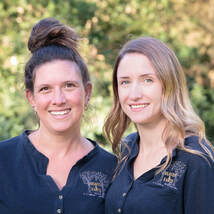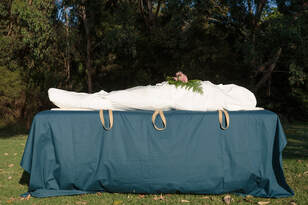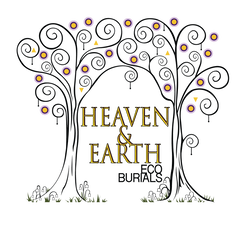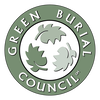 Written by Tamsin Ramone & Alyssa Wormald for the Green Burial Council. Read more about the authors at the end of this article. The Green Burial Council was founded to help educate people who are interested in gentle end-of-life options. When researching burial alternatives and cremation, here are some things to consider.  Cremation continues to gain popularity for many reasons. In 2018, the Cremation Society stated that in Australia nearly 70% of people chose cremation for their final send off. With the ecological issues surrounding conventional burials becoming more well known, many people are choosing cremation because they believe it is the more environmentally conscious option. Here are some facts to consider when choosing between cremation, a standard coffin burial or a natural burial. Coffins Coffins and caskets are overwhelmingly the option chosen for the cremation process despite shrouded cremation becoming more available and popular due to its affordability and environmental benefits. Since caskets are significantly more solid than shrouds, they take more energy to burn and the chemicals from the lacquers used are released into the atmosphere. Cardboard coffins are a popular choice for cremation and green burials, as they are less expensive. Whilst cardboard is a more environmentally sustainable option and takes less energy to burn in the crematorium, it is worth bearing in mind that cardboard coffins often contain toxic formaldehyde, are usually not made from fully recycled materials and a significant amount are imported from overseas which adds carbon miles. An Australian-made shroud may be the most ecologically-friendly option for cremation and luckily there are many funeral professionals that will support this choice. Pollution/energy The average cremation uses 106 litres of fuel to completely consume a body, emitting approximately 45 kilograms of carbon dioxide into the atmosphere Every cremation releases between .8 and 5.9 grams of mercury as bodies are burned, 75% goes into the air and the remainder ends up settling into the earth and water. It would be possible to drive 7,725 kilometres on the energy equivalent of the energy used to cremate a person, that is comparable to driving from Melbourne to Darwin and back again. Additionally, “If a body has been embalmed this adds another foreign product to the mix, during the cremation process the embalming fluid is released into the atmosphere via the crematorium flue, which has the potential to settle into the groundwater and circulate throughout the environment.” Ash/bone A common misconception about cremains is that they are ash when they are in fact bone particles. Referring to these remains as ash causes confusion and heartbreaking issues with memorial plants. “Cremated remains [cremains] are bones that have been processed into fine particles following cremation. The cremation process stops natural degradation by removing all organic matter and bacteria from the bone. The bone becomes stable and does not change when scattered on earth or at sea.” The cremation process changes the chemical composition of the bone, locking the mineral nutrients within them. This sets cremains apart from fireplace ash or blood and bone and causes them to actually be harmful to plant life. Cremains are also extremely high in sodium, 200-2000 times too high for the average plant to handle. In addition to this, the pH level of cremains is 12-14, which is the same level as household bleach and almost a million times too high for sustaining plants in its oxidized state. Plants need a level of around 6.4 to be able to unlock the nutrients within the remains and actually benefit from their introduction to their soil. Options and solutions: Throughout the world, there are natural burial alternatives and a growing industry to support it. In Australia, one option is Living Legacy Forests. To improve the sustainability of cremation, it is recommended to choose a shrouded cremation then utilize the services of Living Legacy to treat the cremains, making them safe and beneficial for plant life. The process only takes a few days to lower the pH and sodium to levels that are safe for interring amongst vegetation. Loved ones are then invited to choose a tree to be planted in one of their forests along with the cremated remains. The microbiology used transforms the ash into molecules which are then absorbed by the tree and eventually distributed by seeds back into the earth; a full circle of life. If you are interested learning more about Living Legacy Forests, visit https://livinglegacyforest.com/ Another option for neutralizing the negative effects of cremains is a product called Let Your Love Grow. This product is a vessel of specially modified soil that treats the pH and sodium levels to make the cremains safe for some plant life. The whole process can be done in your own home which fully neutralizes the cremains. https://letyourlovegrow.com Another option for natural burial is to use an ethically and sustainably sourced shroud and place the body in a grave shallower than a standard grave, allowing for swift decomposition. This natural burial practice eliminates the need for hardwoods, lacquers, embalming fluid and plastics, whilst avoiding toxic carbon emissions. To find natural burial sites near you, click here https://www.greenburialcouncil.org/interactive-maps.html. ----------------- These Melbournian sisters, Tamsin Ramone and Alyssa Wormald, share a passion for green burial and the ethos of leaving the Earth naturally and gently. They have lived in the outer eastern suburbs of Melbourne for most of their lives. Growing up in the foothills of Mount Corhanwarrabul, they were raised to care about the planet and animals, values that have very much persisted! Alyssa is a dedicated animal activist, heavily involved in campaigns to protect native wildlife. Tamsin is passionate about trees and protecting old growth forests, she assists multiple campaigns and also fosters the occasional homeless greyhound or guinea pig. They both believe in living with as little impact as possible on the Earth and its creatures. Comments are closed.
|
Call for EntriesWe welcome original content with unique perspectives for the GBC Blog, preferably not previously published. The views and opinions expressed on the GBC Blog are those of the authors and do not necessarily reflect the official position or policies of the GBC. Submit entries by email Archives
February 2024
|

 RSS Feed
RSS Feed

